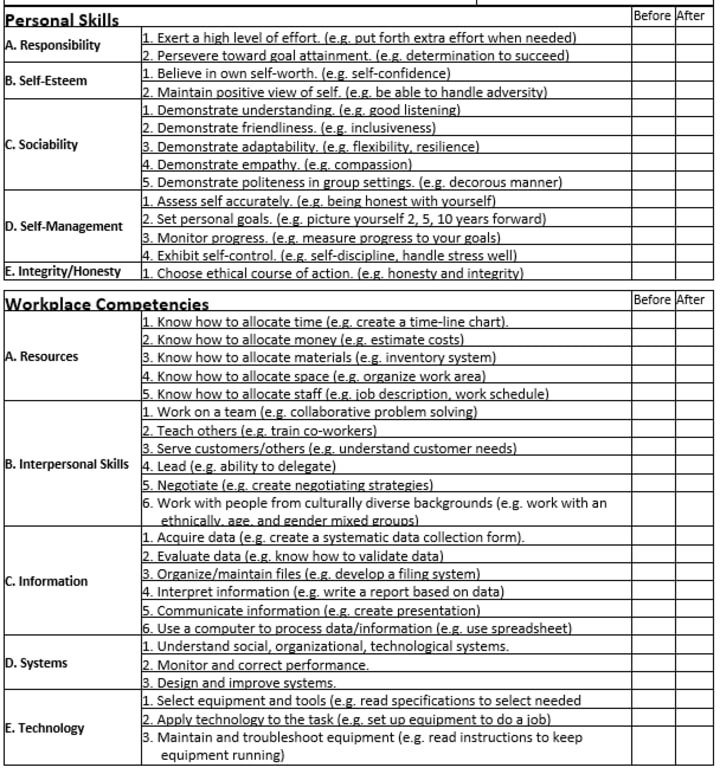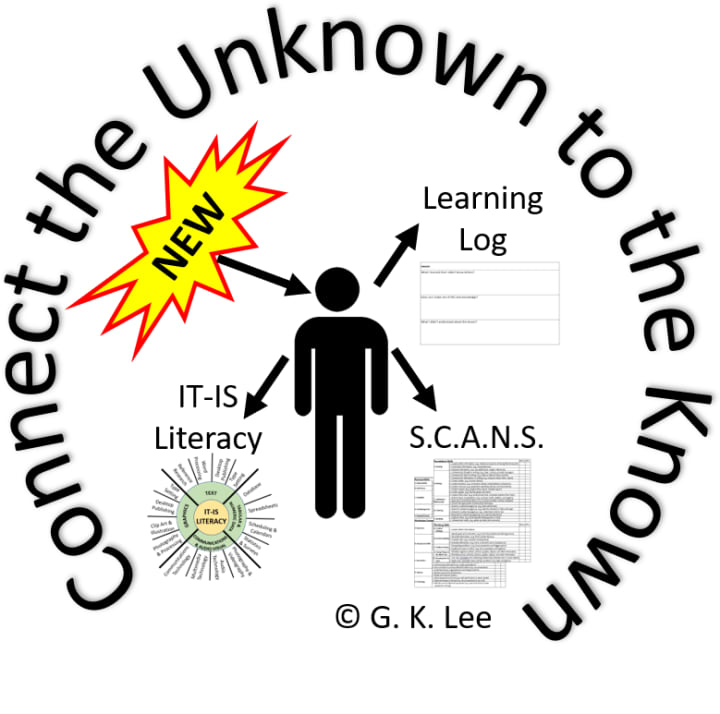
Before COVID-19, many people found themselves changing jobs and careers for a variety of reasons. Some of the reasons include company downsizing, leveraged buy outs, and outsourced jobs. COVID-19 caused global unemployment of about 190 million people. This created pressure for many to “re-invent” themselves. Many people tie their personal identity to their job. If they lose that job, an identity crisis may ensue. So, how do you go about “re-inventing” yourself? Use this three-step guide.
Step 1. Know Thyself: Do a S.C.A.N.S. Inventory
The advice in an ancient Greek aphorism is to “Know Thyself.” How well do you know yourself? I suggest you benefit from your hard-earned US Tax dollars. Use the 1990 U.S. Dept. of Labor study S.C.A.N.S. (Secretary’s Commission on Acquiring Necessary Skills). Yes, I know. It was done 3-decades ago. But the lists are generic and still apply today.
There are four lists: Foundation Skills, Thinking Skills, Personal Skills, and Workplace Competencies. The Labor Dept. surveyed US businesses from “mom and pop” stores to Fortune 500 companies. These lists represent what US employers expect of new employees.
Part 1. You need to do an honest self-inventory using the S.C.A.N.S. lists. For each item on the lists, ask yourself “Can I do this so well, I would pay me to do it?” If the answer is “yes,” put a check mark on the list. If “no,” leave it blank.


Part 2. Do a S.C.A.N.S. inventory of a job description of interest. Carefully read the job description. Check off items in the description that are on the S.C.A.N.S. lists. Then compare / contrast your personal inventory with the job description inventory. Tally the items that match. Note the items on the job description that you cannot match. These are the areas you need to improve upon to increase your qualifications for the job.
Options to Additional Skills / Competencies.
• Volunteer with a Purpose. Be sure to volunteer to get experience to fill the gaps of your personal S.C.A.N.S. inventory. The big advantages of volunteering are: 1) they cannot order you to come to “work;” 2) you cannot be fired. Before you commit to volunteering, clearly state you expect a letter on the organization’s letterhead documenting your work. Provide a copy of the S.C.A.N.S. list with specific items you are volunteering to do. When you complete your volunteer work, this S.C.A.N.S. list is your confirmation of your work. Cultivate your contacts for future letters of reference. This will help to fill the gaps on your personal S.C.A.N.S. inventory. [Note: Do a S.C.A.N.S. inventory before and after your volunteering. You might be surprised to find you learned something you didn’t expect to learn!]
• Attend relevant Organization and Society Meetings. Find local meetings of organizations related to your field. Make it a point to attend and introduce yourself. Talk to people with practical experience in your field. In conversation, mention your volunteer experiences. You never know who may know someone who can help you. Ask them 5 questions:
1. Why did you choose this line of work?
2. What did you study that best prepared you for this job?
3. What was missing in your education that you need for this job?
4. What do you like most about this job?
5. What do you like least about this job?
Take good notes. Pay attention to responses to items #2 and #3. Review your personal and job description S.C.A.N.S. inventories with this information. You might find items to add to your list of new additional knowledge and skills to get.
• • Take a Class. Take a class to get needed training to fill the gaps of your personal S.C.A.N.S. inventory. It doesn’t matter if the class is formal or informal. Do a S.C.A.N.S. inventory before and after the class. It is vital you acquire the knowledge and skills you need. Document your training. Use a Learning Log (see Step 3) after every class or lesson. [Note: Keep detailed records any self-study or informal study you do. You may not get a transcript or certificate. But you have a detailed file to show your effort. You never know who might be interested to see it.] What and how you make use of your knowledge is limited by your imagination.

Step 2. Use the IT-IS Literacy Model to assess and guide you. The Information Technology-Information Systems Model gives you another way to assess yourself. You may need to adjust the details for your field. Put yourself in the center of the diagram. The green ring is subdivided into four sections. These represent broad job functions: Text, Tabular & Numeric Data, Graphics, and Communications & Audio Visual. The detailed applications appear as radial spokes in the diagram. These are programs or applications specific to your line of work.
If you don’t know what these are, ask someone. If you are in school, start with course instructors and career counselors. At organization and society meetings, ask those working in your field. Your knowledge and skills from school and training are one thing. Talking about the job and doing it are two different matters. You show how well you can use your knowledge and skills in your work. You get paid for doing work.
[Note: Don’t confuse literacy with proficiency. Literacy is having knowledge about something. Proficiency is having advanced ability to use your knowledge and skills. The IT-IS Literacy Model points out specific tools and technologies related to your job. Being aware of these is important. No one can know everything about all aspects and details of a job. That’s why there are reference books and resources to use at work. Being aware enables you to talk with others, especially specialists, to get the job done. Ideally, with time, practice, and experience you develop proficiency. This merits promotion and advancement in your career.]

Step 3. Use a Learning Log: There are many forms for this type of learning aid. I prefer this version. Answer in complete sentences. Keep your answers brief. There are only three questions:
1. What did I learn that I didn’t know before?
2. How can I make use of this new knowledge?
3. What I didn’t understand about the lesson?

Use this time for reflection and introspection. Make a conscious effort to connect the new knowledge to what you already know.
Remember your personal S.C.A.N.S. inventory and your IT-IS Literacy Model? Adding new items to your S.C.A.N.S. inventory automatically shows you some of the connections. Add new technologies to your IT-IS Literacy Model. Placement in the model shows you how new items connect to what you know.
Periodically re-assess yourself. Track your progress. Periodic reviews will help you see if you are “up to snuff” for your line of work.
Putting It All Together.
Life is dynamic and changing. Learn to connect new knowledge and skills to what you know. Use these three steps. You will know yourself well. You can re-invent yourself. Make your learning life-long. Don’t be surprised if you re-invent yourself more than once in your life. Re-inventing yourself makes you resilient.







Comments
There are no comments for this story
Be the first to respond and start the conversation.